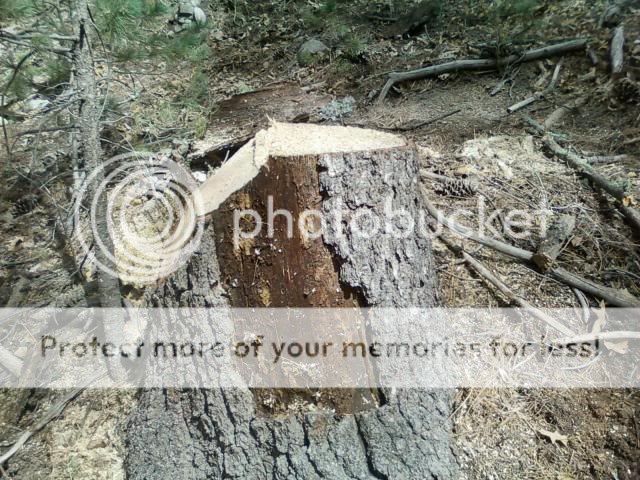Hey if I didn't want my feeling hurt I wouldn't have posted hahaha, I'd rather have someone tell me it was bad and never do it again than say well this, this and this was justified. From now on I'll stick to the trees I know I can handle with less danger, don't fell alot of 40+ trees down here in the south hahah
Alright, I'll have another bite then.
Yes, it was horrible.
The F&L forum isn't the best place to ask this sort of question, but unfortunately we don't have a 'tree falling 101' forum. Maybe that's a good thing ;-) There are a small handfull of general rules for falling trees, and about 50,000 exceptions to those rules. The average firewood cutter is probably going to be fine with the handfull of rules, but the trouble is he often doesn't have the experience to assess when it's an exceptional case. The reason why you'll have a hard time getting a straight answer here, is that most of the guys in this forum are professional forestry workers, or have been at some stage in their lives. For these guys, it isn't as simple as just getting the tree on the ground.
Firstly, they've got to be productive. That means getting the tree on the ground in one piece, without breaking it. Then, they've got to get it down in such a way that it lines up with all the other trees so it can be handled efficiently. Then, they may have to swing it through places without damaging leave trees. Finally, they've got to be quick about it or they aren't going to make any money. For these, and other reasons, professional fallers often drop trees using methods that are not the safest or easiest way to get the tree on the ground. Because of that, they often will leave some real weird looking stumps.... just like the one you posted. The difference is that they did it on purpose, and for a reason. The cards are stacked in their favor for pushing the envelope too; they may be cutting many thousands of trees, in the same location, of the same species, and with room to work. That lets them get a feel for how conditions are for that species and growing condition.
But getting back to your stump, if your intention was a simple straight drop with a standard hinge, then it's a fail. You failed to keep your bar parallel to the face during the backcut, and consequently cut right through your hinge. That's something a professional faller may do intentionally for a specific purpose, but I'm guessing it was unintentional on your part. If you cut through your hinge, you lose control of the tree. The tree may swing wildly off to the side, or if it's a back leaner and you're pulling it over, and it hasn't yet commited to the fall then the pull cable may pull the butt right off the stump, particularly if you're pulling with a powerful source like a winch or vehicle and the cable is low in proprtion to the centre of balance of the tree. If it does pull the butt off the stump, the tree is going over backwards, onto you or whatever property is behind it (if there was nothing behind it, you would have just fallen it with the lay, right?).
Even if the tree has committed to the fall, if your bar tip has gone through the hinge as yours appears to have, then the tree can see-saw your saw, and send it flying. Possibly with your attached if you care for it more than you ought to.
Side-stepping, for a moment, the issue of which face cut is best for the task, the question of the percentage of face to holding wood, and the question of stump throw, For the most part you're well served by making whichever face you execute best, 1/3~3/8 the depth of the tree, and leaving around 10% holding wood, parallel as shown below. These are all acceptable stumps.
Take a look at this thread for some good general advice on improving your cutting technique also;
http://www.arboristsite.com/forestry-logging-forum/233490.htm
Shaun
































































